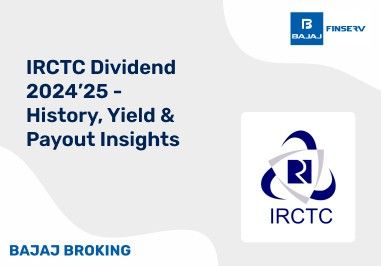BAJAJ BROKING
Tankup Engineers IPO is Open!
Open a Free Demat Account
Trade Now, Pay Later with up to 4x
Track Market Movers Instantly
Understanding AUM: How Mutual Fund Size Impacts Your Investment
Introduction
When it comes to investing in mutual funds, the size of the fund, often referred to as its AUM (Assets Under Management), can be an important consideration. AUM represents the total value of the investments that a mutual fund manages on behalf of its investors. This metric can provide valuable insights into a fund's stability, resources, and potential impact on your investment portfolio.
Highlights
- Understanding the concept of AUM in mutual funds
- Exploring the potential benefits and drawbacks of investing in larger vs. smaller mutual funds
- Analysing the relationship between AUM and fund performance
- Discussing the importance of diversification and portfolio allocation
- Providing tips on how to evaluate mutual fund size as part of your investment decision-making process
Understanding AUM in Mutual Funds
AUM, or Assets Under Management, is a crucial metric that reflects the total value of the investments managed by a mutual fund. This figure encompasses the combined value of all the individual investments that the fund holds, including stocks, bonds, and other securities.
The AUM of a mutual fund can range from a few million dollars to billions of dollars, depending on the fund's size and popularity among investors. Larger funds, with higher AUM, typically have more resources and economies of scale, which can impact their operations, fees, and overall performance.
Advantages of Investing in Larger Mutual Funds
1. Stability and Longevity: Larger mutual funds, with their substantial AUM, tend to have a more established track record and are generally considered more stable and less susceptible to sudden market fluctuations or fund closure.
2. Economies of Scale: Larger funds can often negotiate better deals with service providers, such as trading platforms and custodians, which can lead to lower operating expenses and potentially higher net returns for investors.
3. Diversification: Larger funds typically have the resources to invest in a broader range of assets, potentially providing investors with greater diversification and risk management.
4. Liquidity: Larger funds generally have more liquid portfolios, making it easier for investors to buy and sell shares without significant market impact.
Drawbacks of Investing in Larger Mutual Funds
1. Potential for Underperformance: The sheer size of a large mutual fund can sometimes make it challenging to outperform the broader market, as it becomes more difficult to find investment opportunities that can meaningfully impact the fund's overall performance.
2. Limited Flexibility: Larger funds may have less flexibility in their investment strategies, as their size can make it harder to quickly adapt to changing market conditions or capitalise on smaller-scale investment opportunities.
3. Increased Costs: While larger funds can benefit from economies of scale, they may also face higher operating expenses, such as compliance and regulatory costs, which can be passed on to investors in the form of higher expense ratios.
4. Potential for Style Drift: As a larger fund grows, it may find it challenging to maintain its original investment focus and style, which could lead to style drift and potentially less consistent performance over time.
Advantages of Investing in Smaller Mutual Funds
1. Potential for Outperformance: Smaller mutual funds, with their nimble investment strategies and ability to exploit niche opportunities, can sometimes outperform their larger counterparts, especially in certain market conditions.
2. Tailored Investment Approach: Smaller funds often have more flexibility to adapt their investment strategies to changing market dynamics, potentially allowing them to be more responsive to new opportunities.
3. Reduced Costs: Smaller funds may have lower operating expenses, as they can avoid the higher compliance and regulatory costs associated with larger funds, potentially leading to lower expense ratios for investors.
4. Alignment with Investor Interests: Smaller fund managers may have a stronger personal stake in the fund's success, which can lead to a more aligned investment approach and potentially better decision-making on behalf of investors.
Drawbacks of Investing in Smaller Mutual Funds
1. Increased Risk: Smaller mutual funds may be more susceptible to market volatility and have a higher risk profile compared to larger, more established funds, potentially leading to greater investment volatility.
2. Limited Diversification: Smaller funds, due to their size, may have a more concentrated portfolio, which can reduce the level of diversification compared to larger funds with broader investment mandates.
3. Liquidity Concerns: Smaller funds may have less liquidity, making it more challenging for investors to buy and sell shares without significantly impacting the fund's performance.
4. Heightened Closure Risk: Smaller mutual funds have a higher likelihood of being closed or merged with other funds, which can disrupt an investor's portfolio and lead to potential tax consequences.
Conclusion
In the vast and dynamic world of mutual funds, the size of a fund, as measured by its AUM (Assets Under Management), can be a significant factor to consider in your investment decision-making process. By understanding the potential advantages and drawbacks of investing in larger vs. smaller mutual funds, you can make more informed decisions that align with your investment goals, risk tolerance, and overall portfolio strategy.
Remember, while AUM is an important metric, it should not be the sole determinant of your mutual fund selections. Evaluate a fund's AUM in the context of its investment approach, performance history, fees, and overall fit within your diversified portfolio. By taking a comprehensive approach, you can navigate the mutual fund landscape more effectively and build a portfolio that serves your long-term financial objectives.
Disclaimer: Investments in the securities market are subject to market risk, read all related documents carefully before investing.
This content is for educational purposes only. Securities quoted are exemplary and not recommendatory.
For All Disclaimers Click Here: https://bit.ly/3Tcsfuc
Share this article:
Read More Blogs
Disclaimer :
The information on this website is provided on "AS IS" basis. Bajaj Broking (BFSL) does not warrant the accuracy of the information given herein, either expressly or impliedly, for any particular purpose and expressly disclaims any warranties of merchantability or suitability for any particular purpose. While BFSL strives to ensure accuracy, it does not guarantee the completeness, reliability, or timeliness of the information. Users are advised to independently verify details and stay updated with any changes.
The information provided on this website is for general informational purposes only and is subject to change without prior notice. BFSL shall not be responsible for any consequences arising from reliance on the information provided herein and shall not be held responsible for all or any actions that may subsequently result in any loss, damage and or liability. Interest rates, fees, and charges etc., are revised from time to time, for the latest details please refer to our Pricing page.
Neither the information, nor any opinion contained in this website constitutes a solicitation or offer by BFSL or its affiliates to buy or sell any securities, futures, options or other financial instruments or provide any investment advice or service.
BFSL is acting as distributor for non-broking products/ services such as IPO, Mutual Fund, Insurance, PMS, and NPS. These are not Exchange Traded Products. For more details on risk factors, terms and conditions please read the sales brochure carefully before investing.
Investments in the securities market are subject to market risk, read all related documents carefully before investing. This content is for educational purposes only. Securities quoted are exemplary and not recommendatory.
For more disclaimer, check here : https://www.bajajbroking.in/disclaimer
Our Secure Trading Platforms
Level up your stock market experience: Download the Bajaj Broking App for effortless investing and trading













